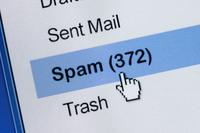Month: December, 2016
11 Tips for Creating Strong Passwords

Are you concerned with your online safety? Here are 11 tips to creating strong passwords – 1. Create passwords that use a combination of both upper and lower case letters, along with a combination of symbols and numbers. 2. Don’t use your wireless network’s name as your password, though you may be tempted to do this since it’s convenient. 3. Don’t create passwords that are easy to guess, such as “1234”, “username”, and “password”. 4. Don’t create passwords based on your confidential information (it’s not as private as you think). Avoid using things such as names of family members, social security numbers, phone numbers, birth dates, etc. 5. Avoid using “real words” (you know, like the ones you’ll find in the dictionary.) There are freely available password-cracking tools on the internet that come with dictionary lists. These lists will try thousands of common passwords and names all at once. If you do use words from the dictionary, try adding numbers to them, as well as different punctuation at the beginning and/or the end of the word. 6. Avoid using side-by-side keyboard combinations: For example, “123456”, “zxcv”, and “qwerty” are all terrible passwords that are easy to crack. 7. Some of the best passwords aren’t necessarily words, but a collection of words that form of phrase. For example, your password may be the first sentence of your favorite book. Making your password complex is good, but making it longer is better. These are called passphrases. Not so long ago, it used to be the case that creating a password that was 8-10 characters in length was good enough. However, these days it has become increasingly affordable for hackers to develop powerful password cracking tools that can run millions of combinations in a matter of seconds. So remember, each character that you include in your password makes it harder for a hacker to attack you through brute force methods. 8. Avoid using the same password on other websites. It’s relatively safe to use the same password on websites that do not store valuable and personal information (such as news websites). It’s a bad idea, however, to use the same password on a web site that is sensitive (such as an online banking website.) 9. Don’t use the password that you created for your email account on another website. If by any chance you get hacked from a different website and the hacker grabs your email address, he can test the password. If it happens to be the same password, pretty soon someone is going to be reading your emails and extracting more personal information from you. 10. Never store your passwords in plain text on your computer. Here’s a better way to remember them: Write down your password on a physical sheet of paper. Create a list of the websites in which you have a password. Next to each one of these websites write down your login name and a clue to help you remember what your password is. If you do tend to forget your password, most companies have a “forgot your password” option on the login screen. When you click that, they will ask you some security questions and email your password. 11. Be weary of generated passwords. There are free online tools at your disposal that will create powerful password combinations for you in a matter of seconds. However, be sure to verify that the generator you are using is safe. Hackers have also figured out a way to create this tool. They on the other hand, will generate a password for others, and then use those passwords to hack into their personal information. Having a secure password is very important. So how do we know if the password we created is strong enough? When we create an online account, usually in the password field, there is a bar that makes an analysis of its strength. To get a good result, we vary the characters between uppercase and lowercase letters, numbers and special characters. Changing passwords from time-to-time is also a good idea. A significant switch in characters every three months would be a good example. We’d love to hear your thoughts and comments below! And as always, if you need any assistance, please email us at Support@HostandStore.com. Enjoy your week! |
The Beginner’s Guide to WordPress SEO

WordPress is used by millions of people around the world to set up and maintain websites. It’s a popular platform because of how easy it is to get a website up and running. Anyone can use it! However, having a pretty site isn’t everything. In order to get the most out of this platform, you still need to implement proper optimization strategies in order to improve your search engine rankings.
This article will provide you with the basics of WordPress SEO to help you rank your website and place it in a favorable position on search engines.
Support Process Update
SUPPORT PROCESS UPDATE
You may have noticed that we have recently updated our support process and that our phone line now goes directly to voicemail.
Here are some answers to a few concerns that we have been seeing regarding our updated support process.
Why Are The Phones Off / Why Only an Online Ticketing System?
- Support tickets are a much more efficient way for us to track tickets, identify recurring issues (allowing us to more quickly focus on resolving a larger issue, if there is one), and give you quicker responses to any issues you may be having.
- Support tickets are reviewed 24/7, while phone calls and voicemails are restricted to business hours only.
Joining Mailing Lists – When Should I? When Should I Not?

When a company decides to invest in creating a mailing list, it wants to offer customers an easy and direct way to receive news and valuable content.
The content you’ll find in a mailing list goes a little beyond the type of content that companies put out on their website and corporate blog.
If you stumbled upon this article as a business owner, know that your job is to invest in the development of information that brings value to your customers. By serving them with genuinely useful, insightful, and informative content, your efforts should positively impact their lives and greatly increase the likes, shares, and organic traffic to your site/blog.
Spam Management: 5 Simple Steps to Eliminate Spam
Everyone hates spam. You know, those unsolicited emails that are sent to us and sometimes infected with viruses. Unfortunately, most of us receive them often. Spam has actually become an epidemic in the online world. It represents over 80% of the emails received on Gmail, according to company data.
Fortunately for us, there are a variety of anti-spam filters out there. They block these annoying emails and therefore nullify their negative effects. Since this is something that many people have to deal with on a daily basis, it’s good to know how these tools work and how you can get rid of spam.

